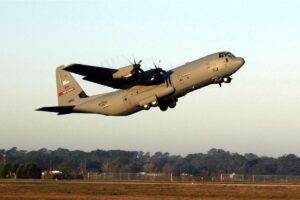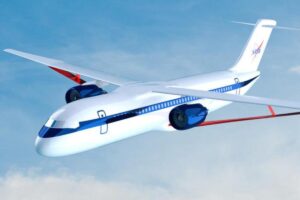ARINC-429 Protocol: The Backbone of Avionics Communication
Introduction
The aviation industry operates in an environment that demands high reliability, precision, and fault tolerance. One of the key enablers of these characteristics is the communication infrastructure that interconnects avionics systems onboard aircraft. At the heart of this infrastructure lies the ARINC-429 protocol, a standard developed to ensure robust, unidirectional data transmission between critical subsystems. This white paper delves deeply into the ARINC-429 protocol, exploring its technical specifications, real-world applications, benefits, and its continued relevance in modern and future avionics systems.
1. The Evolution of Avionics Communication
1.1 Early Systems and Limitations
Before the development of ARINC-429, avionics systems employed analog signaling and proprietary digital formats. These early systems were susceptible to noise, lacked standardization, and required bulky wiring and custom interfaces. As aircraft became more complex, the need for a more reliable and standardized method of communication became evident.
1.2 Introduction of ARINC Standards
To address interoperability issues, Aeronautical Radio, Inc. (ARINC) introduced a suite of standards. Among these, ARINC-429 emerged in the late 1970s as a breakthrough solution for digital communication, offering a simple, point-to-point, unidirectional data bus that dramatically improved integration across avionics systems.
2. ARINC-429 Protocol Overview
2.1 Basic Architecture
ARINC-429 is a two-wire, unidirectional data bus that transmits data in a single direction from a transmitter to one or more receivers. It operates on a twisted pair of wires to enhance resistance to electromagnetic interference (EMI).
2.2 Data Format
Each ARINC-429 word is 32 bits long and consists of several fields:
- Label (8 bits): Identifies the type of data.
- Source/Destination Identifier (SDI) (2 bits): Specifies which receiver the data is intended for.
- Data (19 bits): Actual data payload.
- Sign/Status Matrix (SSM) (2 bits): Indicates data validity or sign.
- Parity (1 bit): Odd parity for error checking.
2.3 Transmission Rates
The protocol supports two primary transmission rates:
- Low Speed: 12.5 kbps
- High Speed: 100 kbps
These speeds offer a balance between data rate and cable length.
3. Technical Advantages of ARINC-429
3.1 Deterministic Communication
The simplicity of the unidirectional protocol ensures deterministic timing, meaning that the data flow is predictable and repeatable—critical for real-time avionics functions.
3.2 Noise Immunity and Integrity
Twisted pair wiring and balanced differential signaling reduce the impact of EMI, which is common in aircraft environments. The parity bit further ensures that corrupted data can be detected.
3.3 Scalability and Flexibility
Multiple receivers can be connected to a single transmitter without data collisions, simplifying bus configuration and enabling easy scaling of the avionics architecture.
4. Practical Applications in Aircraft Systems
4.1 Flight Management Systems (FMS)
ARINC-429 plays a central role in FMS, transmitting critical navigation and flight planning data to displays, autopilot systems, and other subsystems.
4.2 Engine and Monitoring Systems
Engine parameters such as thrust, temperature, and fuel flow are distributed across aircraft using ARINC-429, supporting efficient monitoring and diagnostics.
4.3 Cockpit Displays and Alerts
Primary Flight Displays (PFD) and Multi-Function Displays (MFD) rely on real-time data from various sensors, all transmitted over ARINC-429 to ensure synchronization and data accuracy.
4.4 Communications and Navigation Equipment
From VHF radios to GPS receivers, ARINC-429 supports the integration of communications and navigation subsystems.
4.5 Safety and Surveillance Systems
Systems like TCAS (Traffic Collision Avoidance System) and GPWS (Ground Proximity Warning System) use ARINC-429 for quick and reliable alert communication.
5. Design Considerations and Challenges
5.1 Wiring and Installation
Although the protocol is simple, careful attention must be paid to cable routing and shielding to avoid crosstalk and signal degradation.
5.2 Message Management
ARINC-429 lacks built-in message prioritization or arbitration, so designers must implement timing strategies to avoid congestion and ensure timely data delivery.
5.3 Data Conversion and Integration
Modern systems often require conversion between ARINC-429 and other protocols like MIL-STD-1553 or Ethernet. This necessitates use of protocol converters and integration planning.
6. Tools and Equipment for ARINC-429 Systems
6.1 Test Equipment
Specialized test sets allow engineers to simulate, monitor, and analyze ARINC-429 data, ensuring system integrity during development and maintenance.
6.2 Data Recorders
Flight Data Recorders and Quick Access Recorders capture ARINC-429 data streams for post-flight analysis and compliance with safety regulations.
6.3 Protocol Converters
Bridge devices convert ARINC-429 data to/from other protocols like CAN, 1553, RS-422, and Ethernet, supporting hybrid avionics architectures.
7. Compliance and Standards Bodies
7.1 ARINC and SAE
ARINC-429 is maintained by ARINC and the SAE International (Society of Automotive Engineers), which ensures updates are aligned with industry needs.
7.2 FAA and EASA Requirements
Regulatory bodies such as the Federal Aviation Administration (FAA) and European Union Aviation Safety Agency (EASA) require compliance with data integrity and communication standards.
7.3 DO-160 and DO-178C
Environmental testing (DO-160) and software development standards (DO-178C) apply to systems utilizing ARINC-429 to ensure reliability and safety.
8. Future of ARINC-429 in Avionics
8.1 Integration with Modern Protocols
Despite the emergence of faster protocols, ARINC-429 remains relevant due to its simplicity and robustness. Converters and gateways are enabling seamless coexistence with newer standards.
8.2 Role in More Electric Aircraft (MEA)
In MEA designs, where electrical systems replace hydraulics, ARINC-429 continues to serve as a dependable method for subsystem communication.
8.3 Migration to ARINC 664 and Ethernet-Based Systems
Next-generation aircraft such as the Boeing 787 are adopting ARINC 664 (AFDX), which uses Ethernet. Still, ARINC-429 is retained in these designs for less demanding or legacy subsystems.
8.4 Cybersecurity Considerations
As data connectivity grows, safeguarding ARINC-429 systems against unauthorized access and spoofing is gaining importance, with measures being developed to secure bus interfaces.
9. Conclusion
ARINC-429 has proven itself as the backbone of avionics communication for over four decades. Its deterministic behavior, noise immunity, and simplicity make it ideal for mission-critical data transmission in airborne systems. While new protocols continue to evolve, ARINC-429 remains an indispensable element in both current and future aircraft designs. Understanding its architecture, applications, and limitations is essential for engineers and system integrators focused on building reliable and compliant avionics systems.





